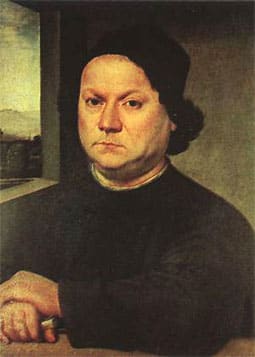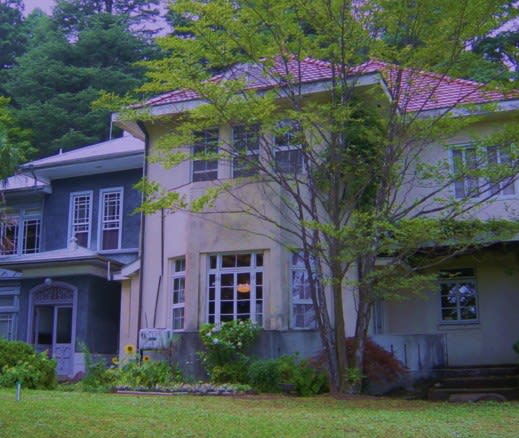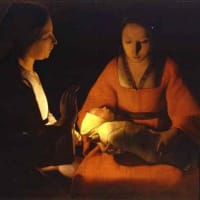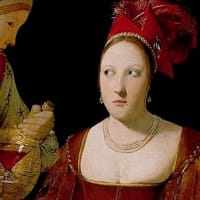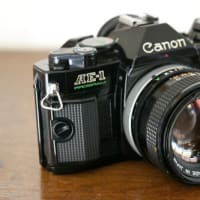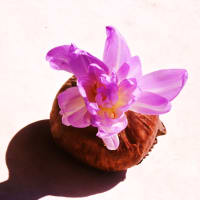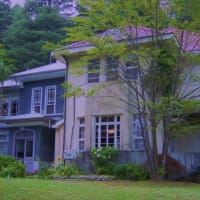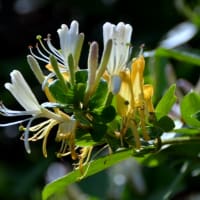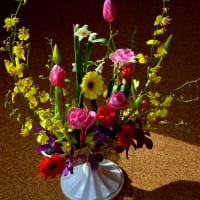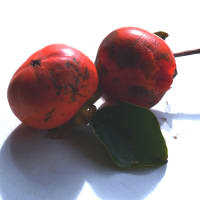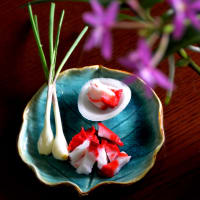アンドレア・デル・ヴェロッキオ
( Andrea del Verrocchio, 1435年頃フィレンツェ - 1488年ヴェネツィア)
イタリア・フィレンツェで工房を構えたルネサンス期の彫刻家・画家・建築家。
レオナルド・ダ・ヴィンチ の師であったが、年若い彼が描いた絵を見て、その見事さに驚愕しその後絵を描かなくなったと伝えられている。その後はレオナルドに絵画を任せ、自分は専門の彫刻に専念できたらしい。ボッティチェッリもヴェロッキオの元にはよく出入りしていた。
Andrea del Verrocchio (c. 1435–1488), born Andrea di Michele di Francesco de' Cioni, was an Italian sculptor, goldsmith and painter who worked at the court of Lorenzo de' Medici in Florence in the early renaissance. Few paintings are attributed to him with certainty, but a number of important painters were trained at his workshop. His pupils included Leonardo da Vinci, Pietro Perugino and Lorenzo di Credi. His greatest importance was as a sculptor and his last work, the equestrian statue of Bartolomeo Colleoni in Venice, is universally accepted as a masterpiece. Verrocchio was one of the first and the greatest artists of the renaissance.
ベロッキョのアンドリュー(c。 1435.1488)、フランシス・デのマイケルのアンドリュー生まれる』キオニは、ローレンス・デの法廷で働いたイタリアの彫刻家、金細工職人と画家でした』ルネッサンス初期にフローレンスのPhysicians。 確定的に彼に起因しているほとんど絵コンゴウインコは、彼のワークショップで多くの重要な画家に以外訓練されませんでした。 あなたからの彼の生徒含まれたレオナルドは、勝ちます、信条のビエトロ・ペルジーノとローレンス。 彼の最も大きな重要性は彫刻家に関してありました、そして、彼の最後の仕事(ベニスのバーソロミュー・コレオーニの乗馬の像)は傑作に関して一般的に受け入れられます。 ベロッキョは、ルネッサンスの初で最も偉大なアーティストの1人でした。
LifeVerrocchio was born in Florence in or about 1435. His father was Michele di Francesco Cioni, who worked as a tile and brick maker and, later, as a tax collector. Verrocchio never married, and had to provide financial support for some members of his family. He was at first apprenticed to a goldsmith. It has been suggested that he was later apprenticed to Donatello, but there is no evidence of this and Pope-Hennessy considered that it is contradicted by the style of his early works. It has been suggested that he was trained as a painter under Fra Filippo Lippi.[1] Little is known about his life. His main works are dated in his last twenty years and his advancement owed much to the patronage of Piero de'Medici and his son Lorenzo. His workshop was in Florence where he was a member of the Guild of St Luke. Several great artists passed through his workshop as apprentices. As well as Leonardo da Vinci and Lorenzo di Credi these included Domenico Ghirlandaio, Francesco Botticini, and Pietro Perugino. Their early works can be hard to distinguish from works by Verrocchio.[2] At the end of his life he opened a new workshop in Venice where he was working on the statue of Bartolomeo Colleoni, leaving the Florentine workshop in charge of Lorenzo di Credi. He died in Venice in 1488.[3]
LifeVerrocchioは、1435年に、または、それのまわりにフィレンツェに運ばれました。 彼の父はミシェルdiフランチェスコ・キオニでした。そして、その人はタイルとレンガ・メーカーとして、そして、後で、収税吏として働きました。 ベロッキョは決して結婚しないで、財政援助を彼の家族の一部のメンバーに提供しなければなりませんでした。 彼は、最初は金細工職人の徒弟になりました。 彼が後でドナテロの徒弟になったことが示唆されました、しかし、これの証拠がありません、そして、それが彼の初期の作品のスタイルによって否定されると、ポープ=ヘネシーは考えました。 フィリッポLippi.[1つ]リトル師の下の画家が彼の人生について有名であるように、彼が訓練されたことが示唆されました。 彼の主な作品は彼のこの20年で年代を示されます、そして、彼の進歩は多くをピエロde'Mediciと彼の息子ローレンツォの後援に負っていました。 彼のワークショップは、彼が聖ルークのGuildのメンバーであったフィレンツェにありました。 数人の偉大なアーティストは、見習いとして彼のワークショップを通り抜けました。 レオナルド・ダビンチとL・クレーディと同様に、これらはドメニコ・ギルランダイオ、フランチェスコ・ボッティチーニとビエトロ・ペルジーノを含みました。 彼らの初期の作業はVerrocchio.[2つ]によって作業から区別するのが難しくありえます。そして、Atは彼の人生の終わりです。そして、L・クレーディを担当してフィレンツェ人ワークショップを去って、Bartolomeoコレオーニの像に、取り組んでいたベニスで、彼は新しいワークショップを開きました。 彼は、1488.[3つ]で、ベニスで死にました
PaintingDespite the importance of Verrocchio's workshop in the training of younger painters, very few paintings are universally recognised as his own work and there are many problems of attribution.[4]
A small painting of the Madonna with seated child in tempera on panel (now in Staatlische Museen, Gemaldegalerie in Berlin) is considered an early work of 1468/70.[5]
A painting in the National Gallery in London (cat. no.NG2508) of the Virgin and Child with two angels in tempera on panel, which has not previously been attributed to Verrocchio, was cleaned and restored about 2010 and is now attributed to him with a date of about 1467/69.[6]
A small painting on panel of Tobias setting out on his journey with the Archangel Raphael, carrying the fish with which he was to heal his father's blindness, was probably painted as a private devotional picture. It is an early work which has formerly been attributed to Pollaiuolo and other artists. Covi thinks that it was probably painted with assistance from Ghirlandaio. It is now in London at the National Gallery.[7]
より若い画家(自分のものが働く、そして、attribution.[4つ]の多くの問題があって、認められて、絵が一般的にあるごく少数しかでなく)のトレーニングのベロッキョのワークショップの重要性で、PaintingDespiteがあります
パネル(現在Staatlische Museen(ベルリンのGemaldegalerie)で)のテンペラ画の着席する子供と一緒のマドンナの小さな絵は、1468/70の初期の職場と考えられます。[5]
ロンドンの国立美術館で絵(猫。no.NG2508)、中で2人の天使と一緒のバージンとチャイルドの、パネル(それはベロッキョに以前に起因していませんでした)のテンペラ画は、きれいにされて、およそ2010を元に戻して、現在およそ1467/69の日付で、彼に起因しています。[6]
Archangelラファエルと彼の旅行に出ているトビアス委員会の小さな絵は、彼が彼の父の盲目を癒やすことになっていた魚を運んで、個人的な信仰的な絵として多分表現されたでしょう。 それは、以前ポライウォロと他のアーティストに起因していた初期の職場です。 それがギルランダイオからの援助を多分塗られただろうと、Coviは思います。 それは、現在国家Gallery.[7つ]で、ロンドンにあります
The Baptism of Christ, now in the Uffizi at Florence, was painted in 1474-75. In this work Verrocchio was assisted by Leonardo da Vinci, then a youth and a member of his workshop, who painted the angel on the left and the part of the background above. According to Vasari, Andrea resolved never to touch the brush again because Leonardo, his pupil, had far surpassed him, but later critics consider this story apocryphal.
The Madonna enthroned with John the Baptist and St Donato is in the Cathedral at Pistoia. It had been left unfinished and was completed by Lorenzo di Credi when Verrocchio was in Venice near the end of his life.
SculptureAround 1465 he is believed to have worked on the lavabo of the Old Sacristy in San Lorenzo, Florence.[8]
Between 1465 and 1467 he executed the funerary monument to Cosimo de' Medici for the crypt under the altar of the same church, and in 1472 he completed the monument to Piero and Giovanni de' Medici in the Old Sacristy.
In 1467 the Tribunale della Mercanzia, the judicial organ of the Guilds in Florence, commissioned from Verrocchio a bronze group portraying Christ and St. Thomas for the centre tabernacle, which the Tribunale had recently purchased, on the east facade of Orsanmichele to replace a statue of St Louis of Toulouse, which had been removed. He therefore had the problem of placing two statues (more than life size) in a tabernacle originally intended for one. As Covi says,the problem was resolved "in a most felicitous manner" The work was placed in position in 1483 and "has been acclaimed since the day of its unveiling and almost without exception recognised as a masterpiece."[9]
In 1468 Verrocchio made a bronze candlestiick (1.57 metres high), now in the Rijksmuseum, Amsterdam, for the Signoria of Florence.[10]
Also in 1468 he contracted to make a golden ball (palla) to be placed on top of the lantern of Brunelleschi's cupola on the Duomo in Florence. The ball was ingeniously made of sheets of copper soldered together and hammered into shape and then gilded. It was completed by the spring of 1471. (The cross on top was made by other hands). The ball was struck by lightning and fell on 27 January 1601 but was reconstructed in 1602.[11]
In the early 1470s he made a voyage to Rome, while in 1474 he executed the Forteguerri monument for the Cathedral of Pistoia, which he left unfinished.
A bronze statue of David was commissioned by Piero de'Medici. On grounds of style and technique it was dated by Butterfield to the mid-1460s; he considered it a masterpiece of Verrocchio's early career.[12] It was purchased by the Signoria of Florence from his heirs Lorenzo and Giuliano de' Medici in 1476 and is now at the Bargello in Florence.[13] Verrocchio's David is a young lad, modestly clad, contrasting with Donatello's provocative David.[14]
At a date unknown (suggestions range from 1465 to 1480: Pope-Hennessy said abouit 1470) he finished in bronze a Putto (winged boy) with Dolphin, originally intended for a fountain in the Medici villa of Careggi and later brought to Florence for a fountain in the Palazzo della Signoria by the Grand Duke Cosimo de'Medici.[15] This has since 1959 been kept in a room in the Palazzo Vecchio with a copy (by Bruno Bearzi) on the fountain.[16]
The marble bust of a lady with a bunch of flowers (Dama col Mazzolino) in the Bargello at Florence is probably from the later 1470s. The identity of the lady is unknown.[17]
The relief for the funerary monument of Francesca Tornabuoni for Santa Maria sopra Minerva in Rome is now in the Bargello at Florence.
The statue of Bartolomeo Colleoni
Statue of Bartolomeo Colleoni by Verrocchio, cast by LeopardiIn 1475 the Condottiero Colleoni, a former Captain General of the Republic of Venice, died and by his will left a substantial part of his estate to the Republlic on condition that a statue of himself should be commissioned and set up in the Piazza San Marco. In 1479 the Republic announced that it would accept the legacy, but that (as statues were not permitted in the Piazza) the statue would be placed in the open space in front of the Scuola San Marco. A competition was arranged to enable a sculptor to be selected. Three sculptors competed for the contract, Verrocchio from Florence, Alessandro Leopardi from Venice and Bartolomeo Vellano from Padua. Verrocchio made a wax model of his proposed sculpture, while the others made models of wood and black leather and clay. The three models were exhibited in Venice in 1483 and the contract was awarded to Verrocchio. He then opened a workshop in Venice and made the final clay model which was ready to be cast in bronze, but he died in 1488, before this was done. He had asked that his pupil Lorenzo di Credi, who was then in charge of his workshop in Florence, should be entrusted with the finishing of the statue, but the Venetian state after considerable delay commissioned Alessandro Leopardi to do this and the statue was eventually erected on a pedestal made by Leopardi in the Campo SS Giovanni e Paolo in Venice, where it stands today.[18]
Leopardi cast the bronze very successfully and the statue is universally admired, but Pope-Hennessy suggests that, if Verrocchio had been able to do this himself, he would have finished the head and other parts more smoothly and made it even better than it is.[19] Although it was not placed where Colleoni had intended, Passavent emphasised how fine it looks in its actual position, writing that "the magnificent sense oif movement in this figure is shown to superb advantage in its present setting"[20] and that, as sculpture, "it far surpasses anything the century had yet aspired to or thought possible".[21] He points out that both man and horse are equally fine and together are inseparable parts of the sculpture.
Verrocchio is unlikely to have ever seen Colleoni and the statue is not a portrait of the man but of the idea of a strong and ruthless military commander "bursting with titanic power and energy".[22] This is in contrast to Donatello's statue at Padua of the condottiere known as Gattamelata with its "air of calm command" and all Verrocchio's effort "has been devoted to the rendering of movement and of a sense of strain and energy".[23
本稿は個人的なメモ、Wikipedia よりの抜粋と、自動翻訳とか、映像の添付。










